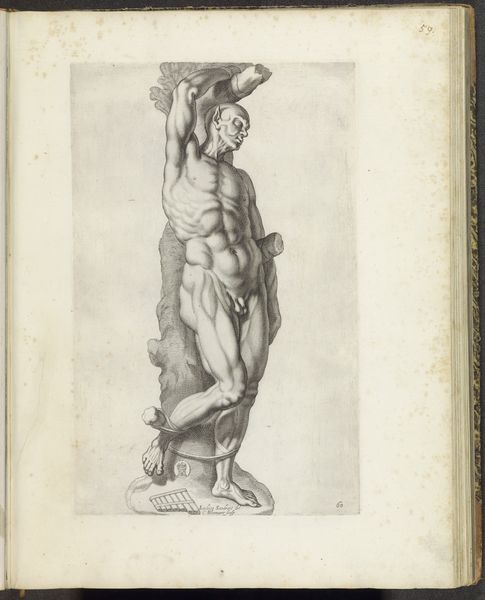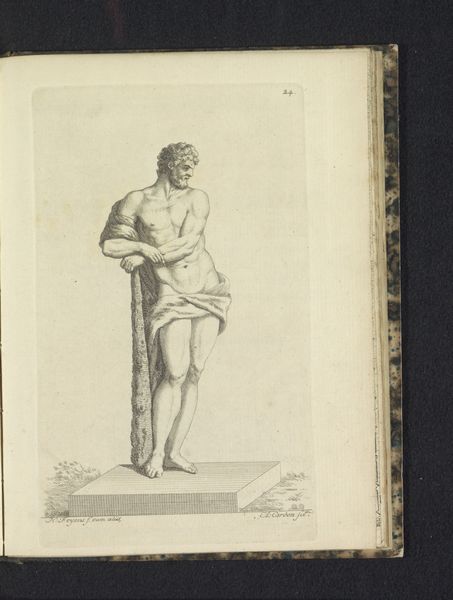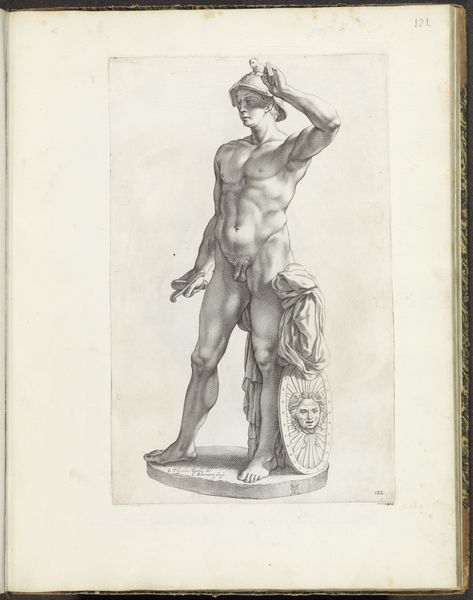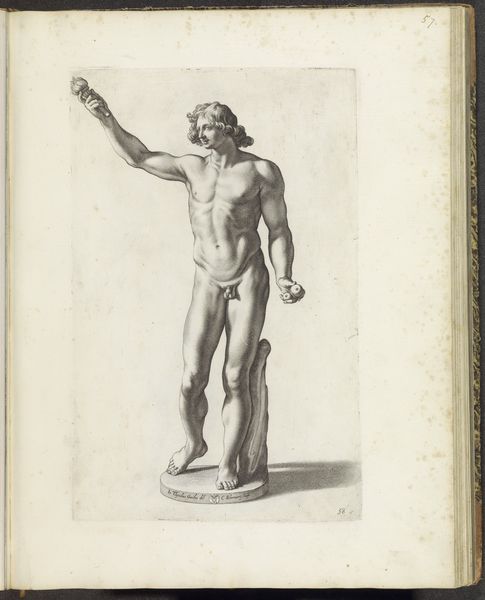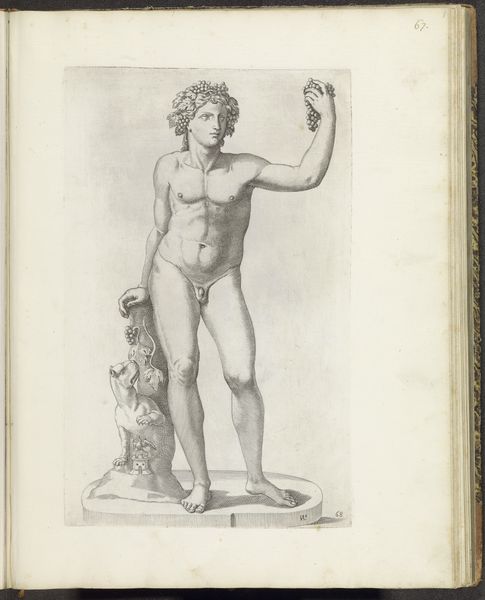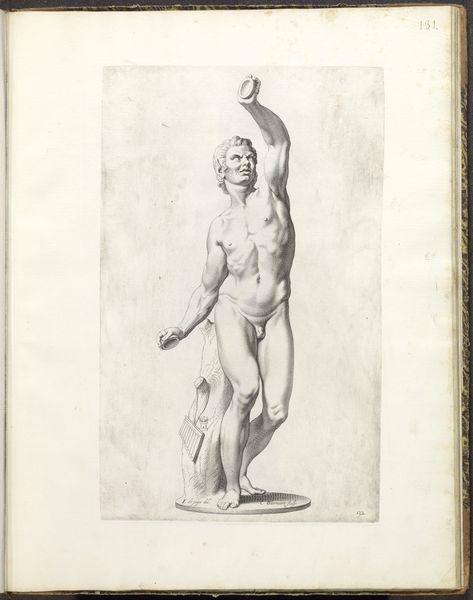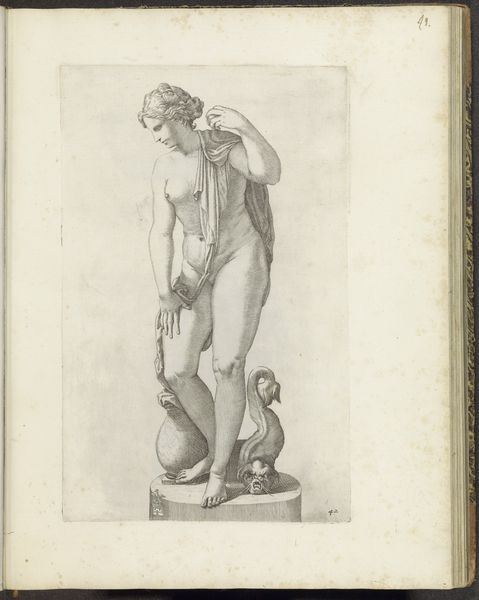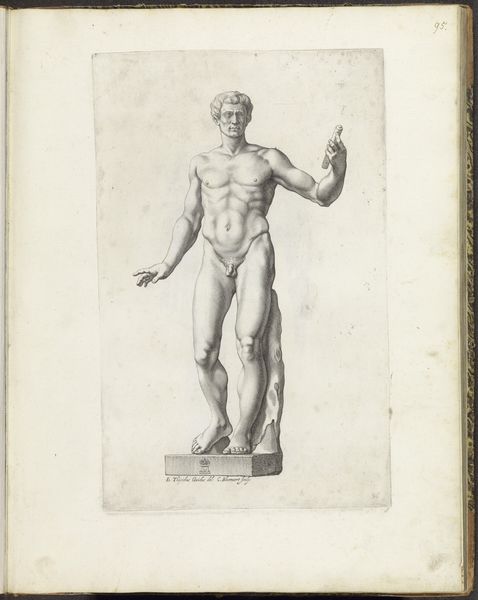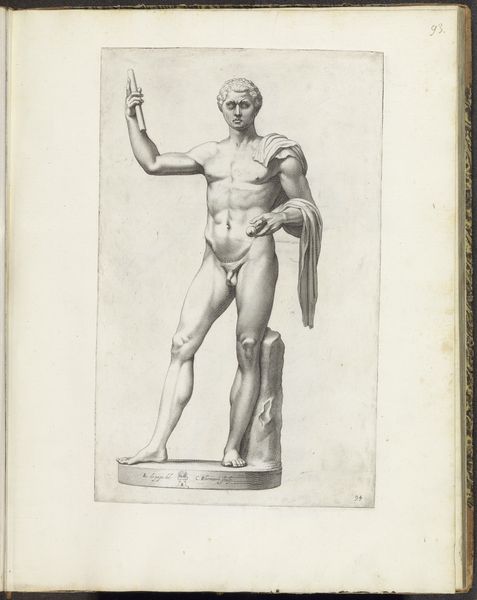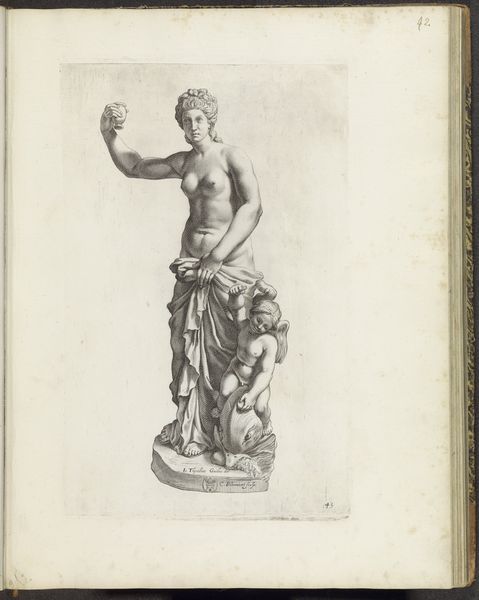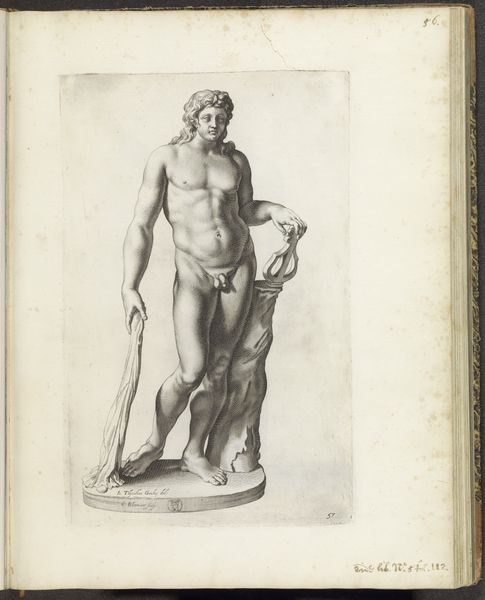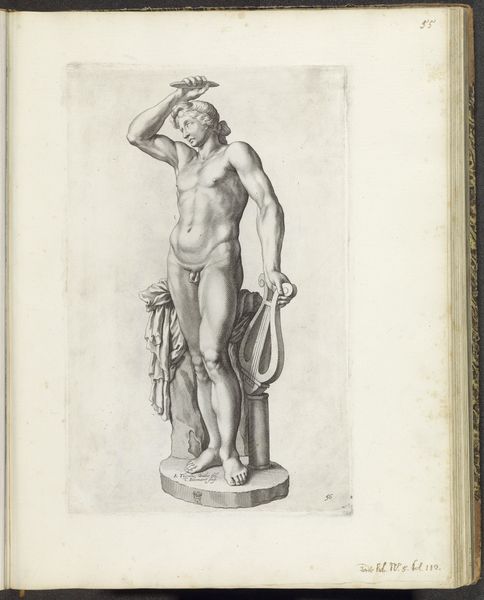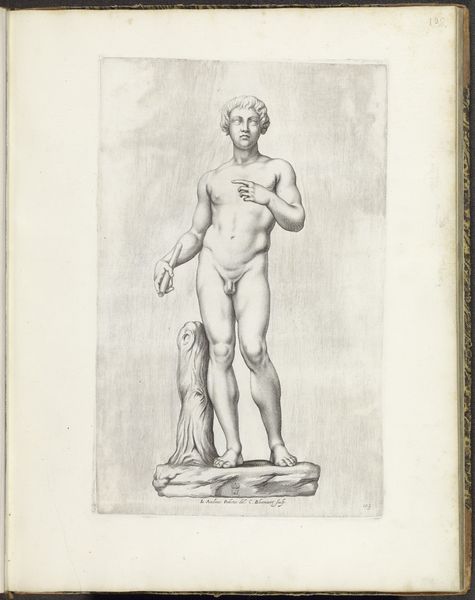
drawing, paper, ink, pen
#
portrait
#
drawing
#
toned paper
#
light pencil work
#
ink drawing
#
baroque
#
pen sketch
#
pencil sketch
#
classical-realism
#
perspective
#
figuration
#
paper
#
personal sketchbook
#
ink
#
ink drawing experimentation
#
pen-ink sketch
#
line
#
sketchbook drawing
#
pen
#
academic-art
#
sketchbook art
Dimensions: height 369 mm, width 232 mm
Copyright: Rijks Museum: Open Domain
Giovanni Luigi Valesio created this print of a retreating gladiator in the early 17th century, likely in Rome. It gives us insight into the cultural fascination with classical antiquity during the Baroque era. The image depicts a muscular figure, kneeling with one arm raised defensively, set upon a pedestal. This immediately evokes the grandeur of ancient Roman sculpture, but also highlights the way these figures were being re-presented and re-interpreted in Valesio's time. During this period, the Vatican and other institutions were actively collecting and displaying classical art, shaping how people understood their past. The print also reflects the socio-political context of the 17th century. The idealised body of the gladiator, a figure associated with power and spectacle, contrasts with his moment of vulnerability. Was Valesio commenting on the nature of power? Was he critiquing the institutions that glorified violence? By studying prints like this, alongside historical documents and collections catalogues, we gain a richer understanding of the complex relationship between art, power, and cultural memory.
Comments
No comments
Be the first to comment and join the conversation on the ultimate creative platform.
